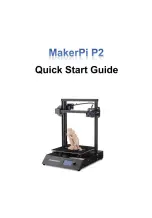
11
3.2.3
Bus Board
The Bus Board distributes isolated 5 V and Ground to the Microprocessor board.
This reduces noise from crossing between the digital, analog, and ribbon driver
circuits. The Bus board provides a location to collect: sensor inputs, hammer
driver control signals, paperfeed control and status lines, ribbon incremental motor
drive lines, and relay control lines.
3.2.4
Microprocessor Board
3.2.4.1 Microprocessor Design
Controlling all functions of the printer is the Microprocessor board with an 8-bit
microprocessor, 16 k-bytes of programming, and 2 k-bytes of non-volatile ram.
The microprocessor utilizes programmable devices to control the relays, the
motors, and the control panel. These devices known as Programmable Peripheral
Interfaces (PPI) have three ports each having eight bit output latch/buffers or eight
bit input/buffers. Each port can be configured to send or receive data, act as
control lines, or receive sensor information. Another device assisting the
microprocessor is a Programmable Timer which uses the system clock,
CPUCLK
,
to create hammer timing.
3.2.4.2 Interface Data
Interface data directed to the microprocessor is first captured by a data latch and
then clocked into a PPI. An interrupt is sent to the microprocessor which then
transfers the data to the print buffer in the non-volatile ram until a paperfeed
control character is received. The printer scans the data buffer and matches the
buffer to the drum. When true compares are made, the Hammer Driver cards are
preset and hammer fire strobes are sent until the data buffer is printed. The
microprocessor completes the operation by stepping the ribbon and sending the
appropriate move command to the paperfeed controller.
3.2.4.3 Paperfeed System
The paperfeed system is controlled by the microprocessor with the
PAP
_
DIR
and
PAPCLK
* signals.
PAP
_
DIR
determines the direction of paper motion, and
PAPCLK
*
drives the paperfeed motor the appropriate number of steps. Should the
microprocessor need to stop the system due to a drape sensor input, the
PAPCLK
*
signal is suspended during the drape short condition. Units configured with a
paper puller use the signal,
PAP
_
DIR
, to activate the paper puller during forward
movement.
3.2.4.4 Interlocks
Prior to printing, the microprocessor monitors all the faults/sensors: paper out,
paper motion, ribbon out, drum gate interlock, power monitor, paper drape, and
the character clock transducer. All faults/sensor signals are sent to the
microprocessor through the PPI's. Each sensor must be in the ready state for the
















































